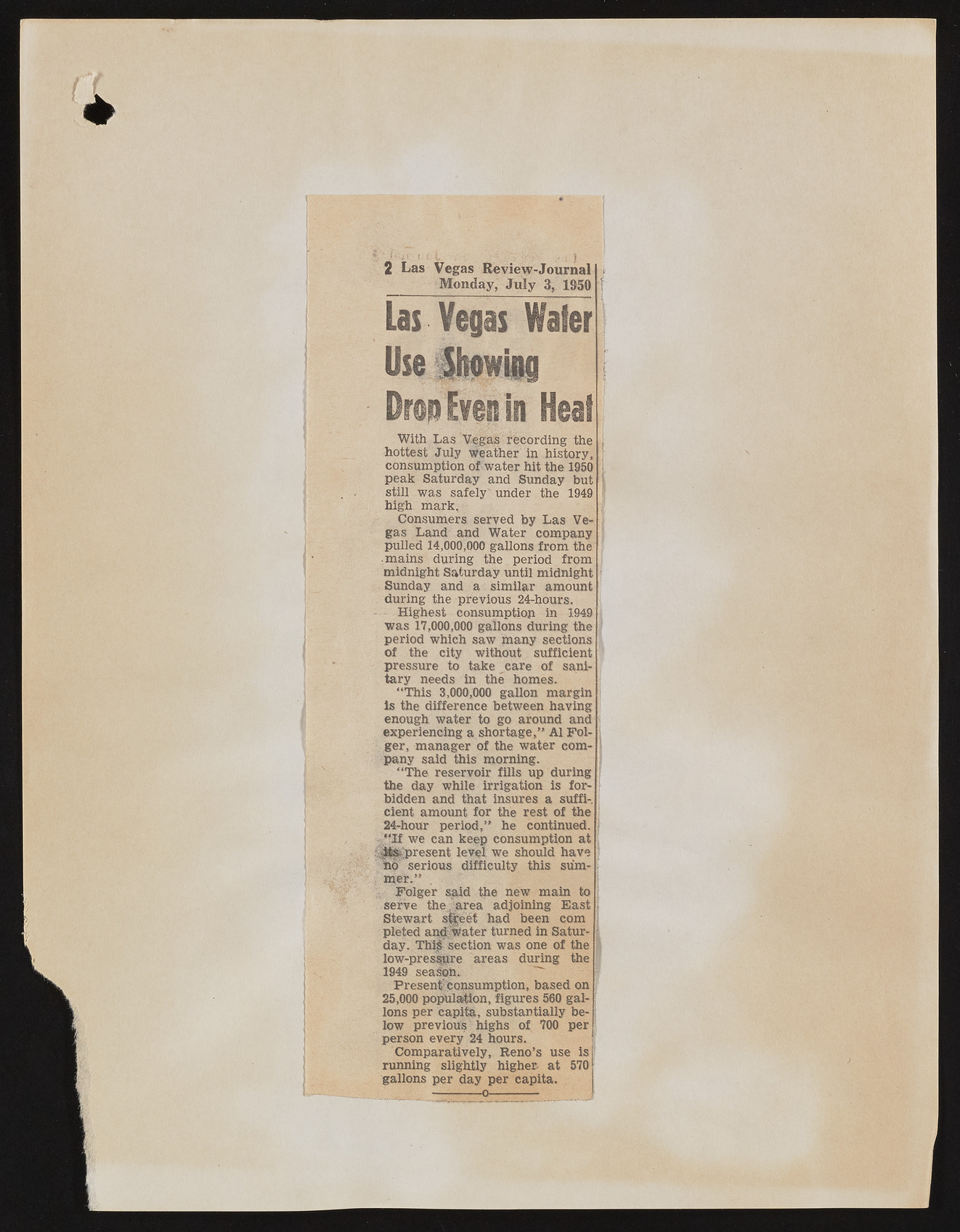Copyright & Fair-use Agreement
UNLV Special Collections provides copies of materials to facilitate private study, scholarship, or research. Material not in the public domain may be used according to fair use of copyrighted materials as defined by copyright law. Please cite us.
Please note that UNLV may not own the copyright to these materials and cannot provide permission to publish or distribute materials when UNLV is not the copyright holder. The user is solely responsible for determining the copyright status of materials and obtaining permission to use material from the copyright holder and for determining whether any permissions relating to any other rights are necessary for the intended use, and for obtaining all required permissions beyond that allowed by fair use.
Read more about our reproduction and use policy.
I agree.Information
Digital ID
Permalink
Details
Member of
More Info
Rights
Digital Provenance
Publisher
Transcription
2 Las Vegas Review-Journal ) Monday, July 3, 1950 i Las Vegas Wafer Usefbowig It Drop Even in Heal With Las Vegas recording the , hottest July weather in history, ; consumption of water hit the 1950 I peak Saturday and Sunday but 1 still was safely' under the 1949 * high mark. Consumers served by Las Vegas Land and Water company pulled 14,000,000 gallons from the mains during the period from midnight Saturday until midnight Sunday and a similar amount during the previous 24-hours. Highest consumption in 1949 was 17,000,000 gallons during the i period which saw many sections of the city without sufficient pressure to take care of sanitary needs in the homes. “This 3,000,000 gallon margin is the difference between having enough water to go around and j experiencing a shortage,” A1 Fol- j ger, manager of the water com- • pany said this morning. “The reservoir fills up during the day while irrigation is forbidden and that insures a suffi-. cient amount for the rest of the 24-hour period,” he continued. “If we can keep consumption at •(il%J>resent level we should have j 'no serious difficulty this sum- j mer.” , Folger said the new main to J serve the^area adjoining East j Stewart sjjeet had been com pleted ancSi&ater turned in Satur- j day. ThiS* section was one of the i low-pressure areas during the 1949 season. Present'Consumption, based on 25,000 population, figures 560 gal- [ Ions per capita, substantially be- low previous highs of 700 per person every 24 hours. Comparatively, Reno’s use is running slightly higher at 570 gallons per day per capita. ?o-

